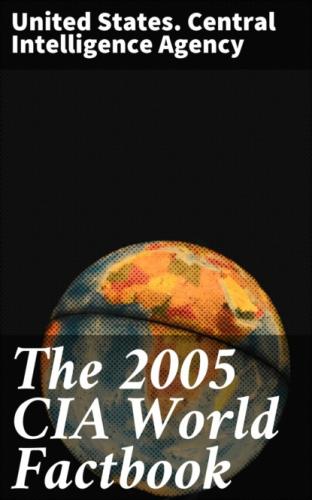This page was last updated on 20 October, 2005
======================================================================
@Iceland
Introduction Iceland
Background:
Settled by Norwegian and Celtic (Scottish and Irish) immigrants
during the late 9th and 10th centuries A.D., Iceland boasts the
world's oldest functioning legislative assembly, the Althing,
established in 930. Independent for over 300 years, Iceland was
subsequently ruled by Norway and Denmark. Fallout from the Askja
volcano of 1875 devastated the Icelandic economy and caused
widespread famine. Over the next quarter century, 20% of the
island's population emigrated, mostly to Canada and the US. Limited
home rule from Denmark was granted in 1874 and complete independence
attained in 1944. Literacy, longevity, income, and social cohesion
are first-rate by world standards.
Geography Iceland
Location:
Northern Europe, island between the Greenland Sea and the North
Atlantic Ocean, northwest of the UK
Geographic coordinates:
65 00 N, 18 00 W
Map references:
Arctic Region
Area:
total: 103,000 sq km
land: 100,250 sq km
water: 2,750 sq km
Area - comparative:
slightly smaller than Kentucky
Land boundaries:
0 km
Coastline:
4,988 km
Maritime claims: territorial sea: 12 nm exclusive economic zone: 200 nm continental shelf: 200 nm or to the edge of the continental margin
Climate:
temperate; moderated by North Atlantic Current; mild, windy
winters; damp, cool summers
Terrain:
mostly plateau interspersed with mountain peaks, icefields; coast
deeply indented by bays and fiords
Elevation extremes:
lowest point: Atlantic Ocean 0 m
highest point: Hvannadalshnukur 2,119 m (at Vatnajokull glacier)
Natural resources:
fish, hydropower, geothermal power, diatomite
Land use: arable land: 0.07% permanent crops: 0% other: 99.93% (2001)
Irrigated land:
NA sq km
Natural hazards:
earthquakes and volcanic activity
Environment - current issues:
water pollution from fertilizer runoff; inadequate wastewater
treatment
Environment - international agreements:
party to: Air Pollution, Air Pollution-Persistent Organic
Pollutants, Biodiversity, Climate Change, Climate Change-Kyoto
Protocol, Desertification, Endangered Species, Hazardous Wastes,
Kyoto Protocol, Law of the Sea, Marine Dumping, Ozone Layer
Protection, Ship Pollution, Transboundary Air Pollution, Wetlands
signed, but not ratified: Environmental Modification, Marine Life
Conservation
Geography - note:
strategic location between Greenland and Europe; westernmost
European country; Reykjavik is the northernmost national capital in
the world; more land covered by glaciers than in all of continental
Europe
People Iceland
Population:
296,737 (July 2005 est.)
Age structure:
0–14 years: 22.1% (male 33,302/female 32,257)
15–64 years: 66.2% (male 99,513/female 96,886)
65 years and over: 11.7% (male 15,723/female 19,056) (2005 est.)
Median age:
total: 34 years
male: 33.53 years
female: 34.49 years (2005 est.)
Population growth rate:
0.91% (2005 est.)
Birth rate:
13.73 births/1,000 population (2005 est.)
Death rate:
6.68 deaths/1,000 population (2005 est.)
Net migration rate:
2.06 migrant(s)/1,000 population (2005 est.)
Sex ratio:
at birth: 1.04 male(s)/female
under 15 years: 1.03 male(s)/female
15–64 years: 1.03 male(s)/female
65 years and over: 0.82 male(s)/female
total population: 1 male(s)/female (2005 est.)
Infant mortality rate:
total: 3.31 deaths/1,000 live births
male: 3.45 deaths/1,000 live births
female: 3.16 deaths/1,000 live births (2005 est.)
Life expectancy at birth:
total population: 80.19 years
male: 78.13 years
female: 82.34 years (2005 est.)
Total fertility rate:
1.92 children born/woman (2005 est.)
HIV/AIDS - adult prevalence rate:
0.2% (2001 est.)
HIV/AIDS - people living with HIV/AIDS:
220 (2001 est.)
HIV/AIDS - deaths:
less than 100 (2003 est.)
Nationality:
noun: Icelander(s)
adjective: Icelandic
Ethnic groups:
homogeneous mixture of descendants of Norse and Celts 94%,
population of foreign origin 6%
Religions:
Lutheran Church of Iceland 85.5%, Reykjavik Free Church 2.1%, Roman
Catholic Church 2%, Hafnarfjorour Free Church 1.5%, other Christian
2.7%, other or unspecified 3.8%, unaffiliated 2.4% (2004)
Languages:
Icelandic, English, Nordic languages, German widely spoken
Literacy:
definition: age 15 and over can read and write
total population: 99.9% (1997 est.)
male: NA%
female: NA%
Government
